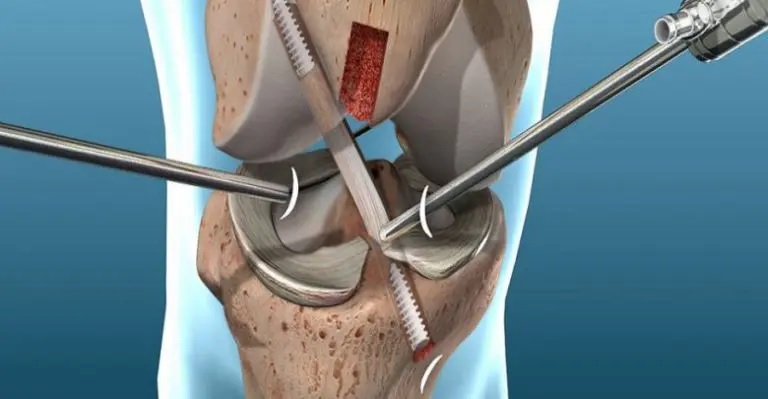Anterior cruciate ligament
The ACL (anterior cruciate ligament) is a band of tissue inside the knee and can be injured when it is stretched or torn. This happens when a quick turn or sudden movement occurs at the same time as running or jumping.
A healthy ACL helps keep the knee bones together and stabilize the knee. Damage to this ligament may be associated with problems applying pressure to the knee, walking, or exercising.
If the ACL is slightly stretched or torn, it may heal over time with the help of a doctor and physical therapy. But in case of complete rupture, especially in cases where the person is young or intends to continue his sports activities, it may be necessary to replace it. If the person is older or less active, the doctor may recommend treatments that do not require surgery.

The doctor removes the torn ligament from the knee and replaces it with new tissue. The goal of this procedure is to stabilize the knee again and regain the range of motion it had before the injury.
Arthroscopic surgery is usually used for ACL. This means they insert delicate instruments and cameras through small incisions around the knee. The skin scar caused by this method is less than open knee surgery.
After the doctor removes the torn ACL, the tendon is placed in its place. (Tendons connect muscle to bone.) The doctor may remove the tendon during surgery from another part of the body (such as the knee, hamstring, or thigh). Or it may use tendons from deceased donors. Both types work well. The insertion of the tendon into the knee is known as a graft.
The doctor places the graft in the right place and creates two holes called "tunnels". One of them will be created in the bone above the knee, and the other in the bone below it. The doctor then places screws in the tunnels and holds the graft in place. This acts as a kind of bridge over which the new ligament grows as the healing process progresses. It may take months for a new ACL to fully grow.
